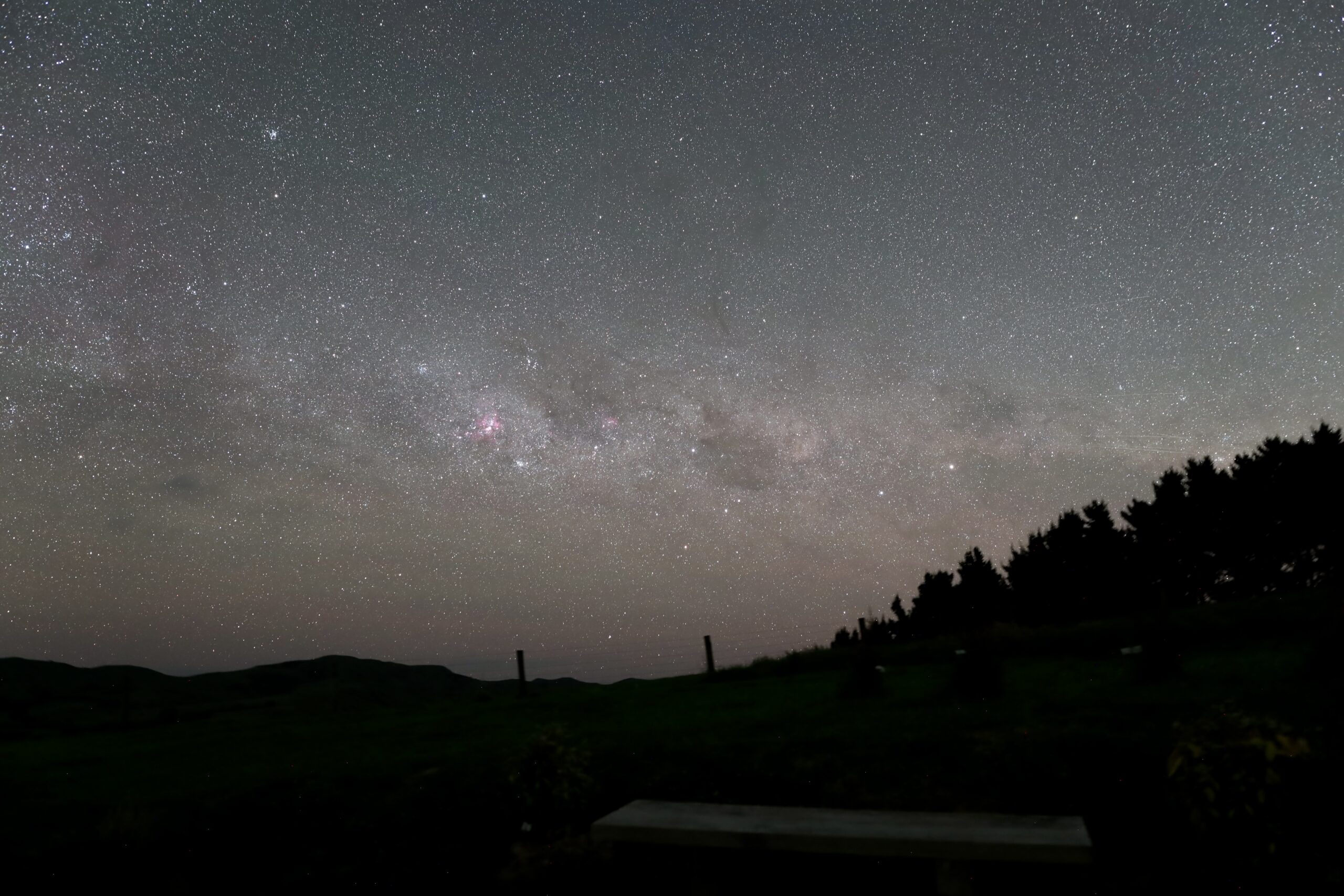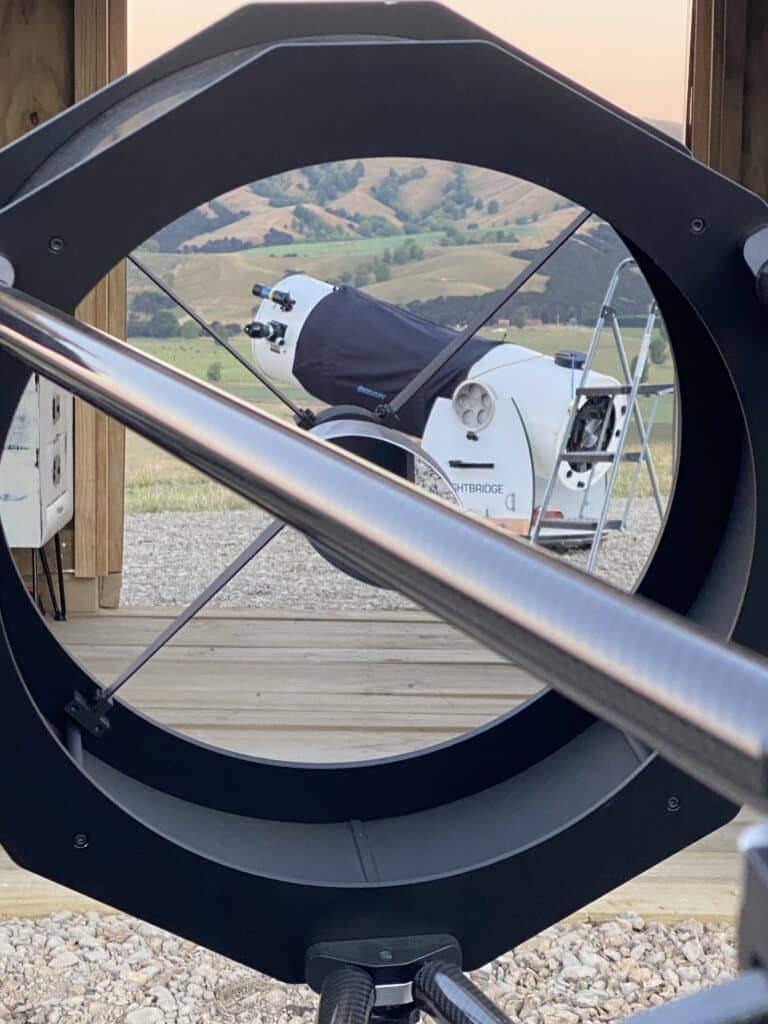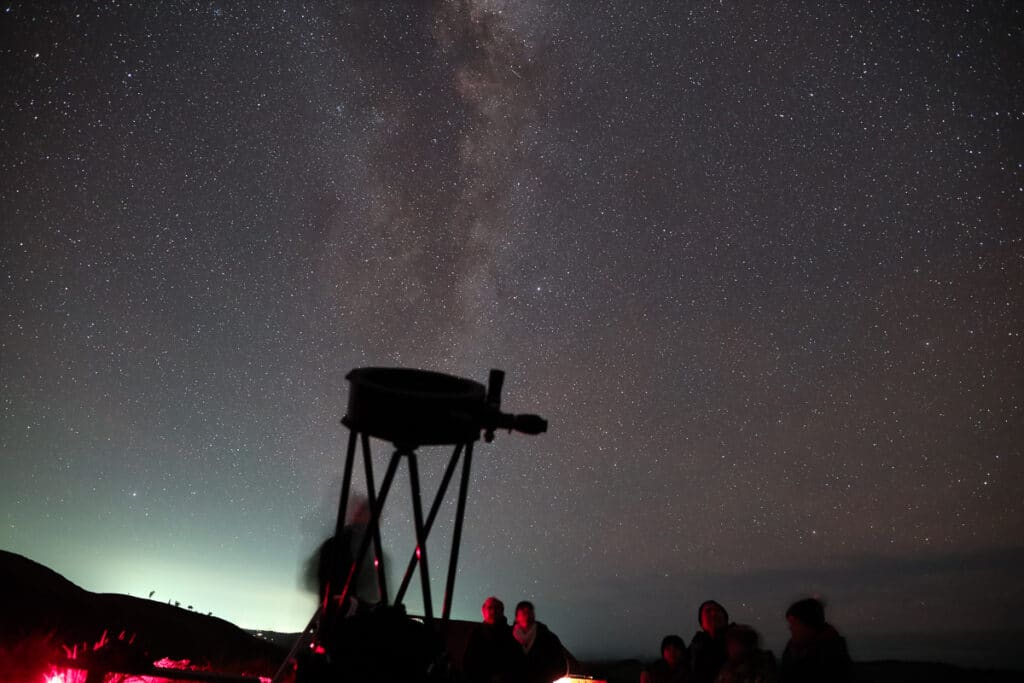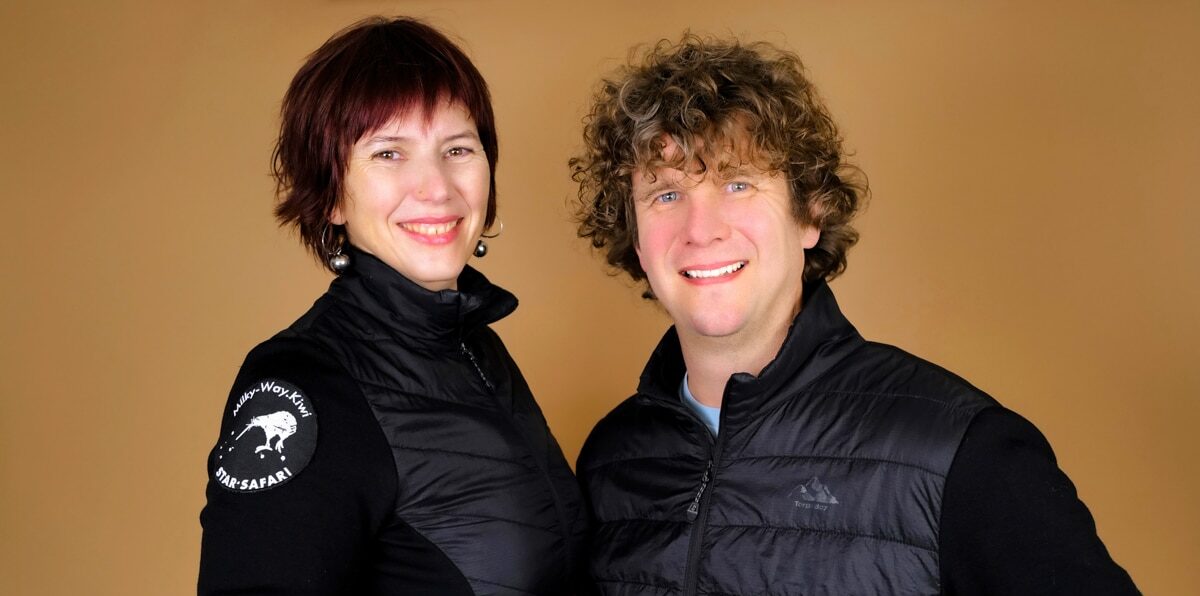for your inspiration
Experience Stargazing in Wairarapa
Learn about the night sky outside

We took this photo from Star Safari in November 2023.
What happens during a stargazing session?
Sometimes, we also see galaxies, comets, occasionally a quasar and, most of our nights out, we definitely spot a few meteors.
We love talking about all these things, what they are, how they got there, how they work, and between the two of us, an astrobiologist and an astrophysicist we have the science communication covered. So bring plenty of questions.
Sam wrote a great blog article here, which gives examples of what we would observe at our stargazing sessions and why we chose to operate manual telescopes.
size does matter

Our telescopes are significantly larger than portable telescopes.
At 16″, are the largest telescopes for public viewing in Wairarapa. We have two of them.
Look at the stars through the best telescope equipment for public viewing in Wairarapa
We use top of the range equipment for our customers – our telescopes are high quality large instruments.
This means we can see a huge range of objects in the night sky: star clusters, galaxies and nebulae.
- 2 x 16" telescopes (405 mm aperture)
- as well as 2 x 10" telescopes (we use these simultaneously)
- Some of the darkest skies easily accessible in Wairarapa
- Professional space science communicators
- Top quality astronomical gear
- Elevated site with fantastic horizon
- 10 minutes from Martinborough and Carterton

your experience with the night sky
Our connection with the night sky started billions of years ago. It is that connection, looking back at the Universe from our special planet, that we seek to show you firsthand. You can browse beautiful photos of the night sky online or take some yourself during our astrophotography sessions, but nothing beats seeing it up close through a telescope.
We stargaze from a fabulous location on top of a hill where you can admire a panorama of Ponatahi Valley.
We take you on a journey to look at the life cycles of stars, how and where they are born, we look at their colours, what they do when they are young, old and what happens when they die.
We discuss how life might have started and if there is any life out there and where might that be.
We look at galaxies with billions of stars whose light has travelled for millions of years to reach your eye tonight.
If the Planets are out, we definitely look at them.
If the Moon is out, we will look at it!
We also have a special adaptor for our telescopes so you can take photos through your smart phones.
Hari is the concept lead and Creative Producer of the movie Ngā Tohunga Whakatere – The Navigators. Sam is a former airforce pilot.
Come learn first hand from our experience with different methods of navigation.
Other things we do when we look through our telescopes:
your hosts, sky rangers and starrytellers
Astronomy and Space Sciences Educator
Sam Leske
Astrobiologist and Martian
Hari Mogosanu

Both of us have been stargazing for more than 20 years, created exhibitions, outreach events, talked to tens of thousands of students, teachers and visitors, and even created a proof of concept space science centre in Carterton.
We look forward to seeing you at Star Safari

